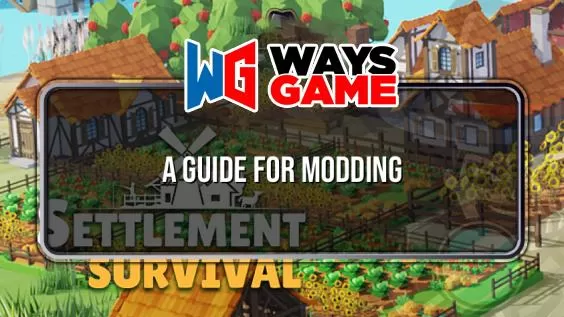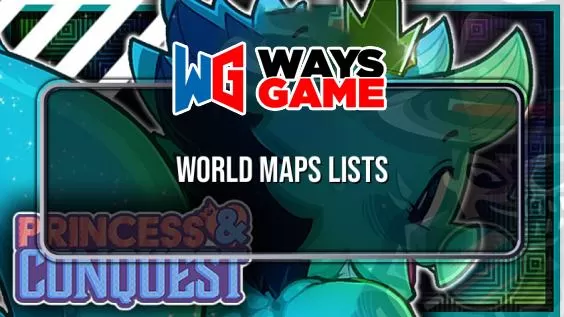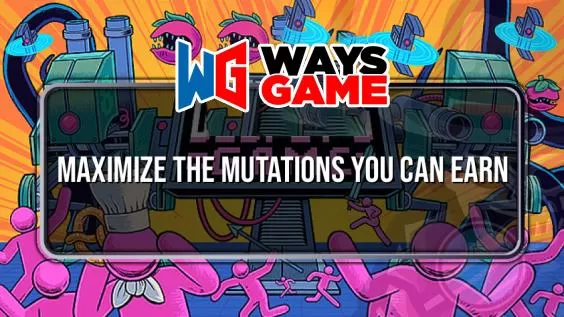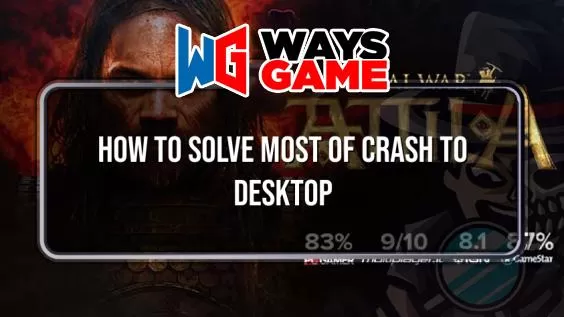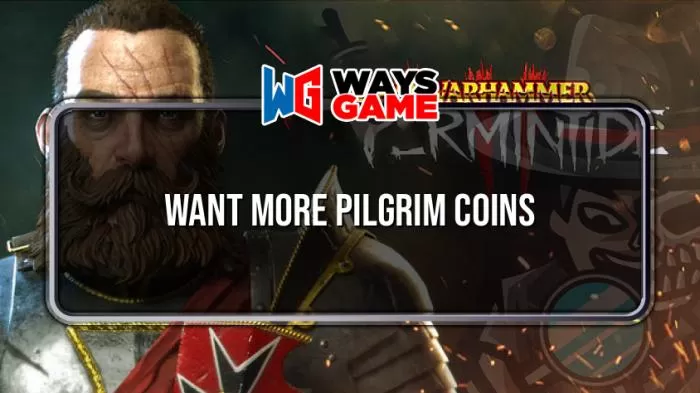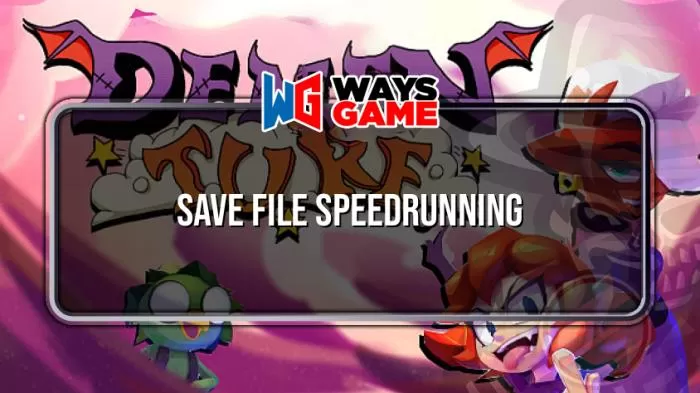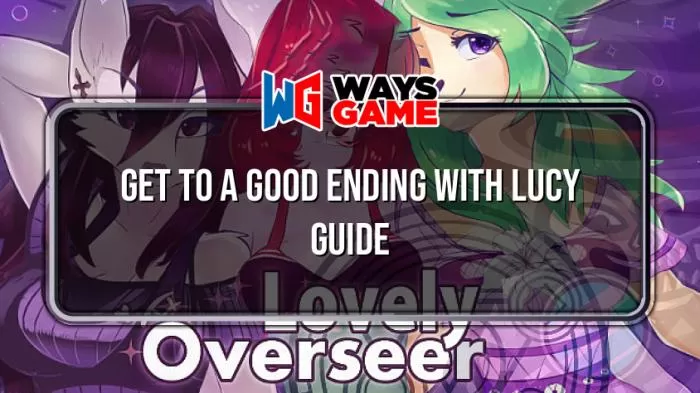If you’ve played Library of Ruina for even an hour your probably encountered a moment that made you think “huh, why did that happen?” I am putting together this guide to help you understand all the various mechanics that the game does not fully explain. Hopefully, by the time you reach Binah, you will have understanding.
Got me feel’n some kinda way.
Light is the energy or mana used to play pages/cards. In the beginning you will start with 3 light and 4 pages in hand, however this will change as the game goes on, as various abilities can change the base amount of light and pages you start with. Each turn you generate 1 light and draw 1 page from the deck. Your maximum handsize is 9. Not coincidentally, also the size of your deck. However if your hand is filled with other pages that weren’t initially in your deck, you will not be able to draw. You will also not be able to draw if you don’t have any cards in your deck or discard, which
LIght is spent on use. This means that if you have a combat page that isn’t used for any reason, be it that you were staggered before it could be used, it was destroyed by a ma*s-combat page, or the would-be target died or became untargetable before the attack could resolve, then no light is spent, but the page is discarded. The first consequence of this is that you need to use light-recovery effects after your big pages, unless you already have missing light. However, because light recovery effects of pages almost always occur on use, or on hit if the target is at risk of dying, use the recovery pages first.
Finally, with one exception, it means that any effect which causes a page to not be played does not refund the light that was used to play it. If you are staggered before you can use a 7-cost attack, the attack has been discarded and the light lost. As mentioned before, there is on exception in the form of the On-Play page [Emerald], which causes 2 random pages of the target character to not be played. However because it is a librarian-exclusive On-Play effect it occurs before the Start of Combat, and therefore, before the guest’s light has been spent. We will cover On-Play effects later.
While your pages are only replenished from your natural draw, or through the effect of a page or pa*sive, there are other mechanics for restoring light. A character regains 1 light every time they either stagger or kill an enemy. But the most impactful method of regaining light is through emotion level.
Your librarians’ emotion level, and that of your enemies is tracked at the bottom right and left of the screen (respectively), this also tracks your emotion coins. Every time you play a page you have a chance to gain a number of emotion coins. Whenever there is a clash with an opponents page for each dice that clashes both gain 1 positive emotion coin when they win and 1 negative emotion coin when they lose. No coin is gained on a tie. Furthermore, if 2 sides are clashing, but one side runs out of dice in the clash, if the their opponent still has offensive dice they gain an additional positive emotion coin.
SO: if a guest attacks with a 3-attack page, and you respond with a page that dodges before attacking once, if your dodge dice beats all 3 attacks you gain 3 positive emotion coins for the dodges, then since the opponent is out of dice you may attack with your 1 offensive dice gaining an additional 4th emotion coin from the clash.
Furthermore, even when there is no clash you gain a positive emotion point when you roll the max value on an offensive dice and a negative emotion coin when you roll the minimum. Furthermore, any character who successfully kills an opponent will gain 3 positive emotion coins, whereas any allies of the character that died instantly gain 3 negative emotion coins.
Each time a character gets a sufficient number of emotion coins, that character gets an emotion level. Gaining an emotion level causes the character to gain an additional maximum light and be at their new max light in the next scene. You can also gain an additional speed dice at Emotion Level III (or two additional speed dice if the character has the Speed II pa*sive).
The number of emotion coins needed to reach the next emotion level starts at three, and increases by two each emotion level, after the first. So there are 3 coins to go from EL 0->EL 1 AND EL 1->2, 5 to go from 2->3, 7 to go from 3->4, etc.
You gain an additional Speed Dice at EL 4, and draw an extra page every turn at EL 5.
The maximum emotion level depends on the floor realization, or how many abnormalities that group of librarians has defeated. However it caps out at 5.
The positive and negative emotion coins have no inherent difference. But once a team has all increased their emotions to the same level, the emotion gauge will increase and you will have a choice of three abnormality cards, chosen from a pool, the number of Green (Awakening) cards drawn versus Red (breakdown) cards depends on the ratio of emotion coins.
While you can’t gain any additional emotion levels after 10, you can still gain emotion coins. Certain abilities you unlock in the mid-to-endgame recharge when you gain emotion coins.

Important note: the enemies also have their own, generic abnormality pages that they get access to when their emotion gauge increases. If you have noticed an enemy randomly gaining strength or endurance without any clear page or pa*sive effect this is probably why. Like your own abnormality pages you can see these by mousing over character models and they will be on the top corner of the screen next to the character stats. They are not named in game.

Strengthen [Awakening]: This guest abnormality gives the guest an additional 1 strength at the start of each scene.

Gloom [Breakdown]: This guest gains 2 Endurance and 1 Feeble (reverse strength) at the start of each scene. Depending on the enemy this can actually be a major boon, since it lowers the power of all their offensive dice by 1.

Friendship [Awakening]: When another ally is attacked, gain 1 strength next scene (max 2).

Bind/Stress [Breakdown]: Confusingly shares a name with an unrelated status effect. Gain 1 endurance at the start of each scene.
As you can see the enemy abnormality pages do not hold a candle to the player’s. With the exception of Friendship they are not much of a threat, but they do help the guests not get completely outscaled by similarly equipped librarians w/ an abnormality. I do recommend focusing down an enemy with friendship when feasible, however.
The Clash
As we discussed in the last section, under some circumstances, instead of the two characters just attacking each other the pages may be placed against each other where the dice are rolled and compared, with the higher roll taking effect. Most of these mechanics are well-explained in game however there a number of nuanced that remain unremarked. On, but first: here is an overview of the dice types from the wiki.

All damage types essentially act the same. However, the defensive dice have some mechanics that deserve to be made note of. There are 2 types of defensive dice, block and evade. If a defensive dice meets another defensive dice they will each take their effect (unless its evade v. evade, in which case nothing happens) and then discard each other. If the dice are used in a one-sided attack, they will be retained and used again if the character is the victim of a one-sided attack later in the round. However, if an evade dice is used, even if it dodges the opponent’s entire page it will not be retained for an additional action.
Furthermore, these dice are not added to other pages you are using. If you are clashing with 2 pages on the same turn, the unused defensive dice from the first clash will not be used in the second. However if you have unused defensive dice and you are attacked without response the defensive dice will automatically protect you, they will also be added to the same cue as any counter-dice you have.
Clashing and Action Order
Second, at the beginning of each scene the guests are the first to select their pages and target the speed dice of the opponents. Then the librarians get to react, choosing whether to clash various opponents or make their own one-sided attacks. There are two ways to cause a clash. First, the speed dice targeted by the guest is automatically allowed to clash the page targeting it, regardless of speed. Second a librarian with higher speed can intervene and clash with a guests’ speed dice with a lower speed. However, when you are clashing with a higher-speed dice, you can no longer choose to clash with the original speed dice targeted, unless that dice is also higher than the dice you are looking to clash with.
Naturally, the clash occurs with the MOST RECENT page with a higher speed than the target, NOT THE FASTEST page. However you may select which target you would like to take the clash by clicking the enemy’s speed dice you are trying to clash and clicking the crossed swords symbol above it or pressing tab.
Small but important point, the dice further to the left (for the librarian) are considered ‘faster’ and usually resolve before the dice to their right, even if their number is tied. Also for each speed that is resolved, clashes typically resolve before one-sided attacks.
Each scene follows a set pattern of phases in which effects and pages are resolved, these phases are followed ahead of any dice priority.
Each scene follows the following phase pattern:
Start of Scene -> Guests Play phase -> Librarians Play phase -> Start of Combat -> Ma*s Attack Phase -> Ranged Phase -> Melee Phase -> End of Scene.
Start of Scene is exactly what it sounds like. Usually there is not a ton that goes on at the start of the scene. However, this is the time that status effects which were caused the scene before as well as persistent status effects are applied (except strength from Pulsation). Since effects usually don’t have durations beyond a scene (except burn), the way long term effects work is that they are simply reapplied every scene for as long as they are intended to last. Thus that if you lose an effect in the middle of a scene somehow you will not regain it until the next scene. However, some effects do not work by having the user gain a status at the beginning of each scene, but are instead a persistent pa*sive effect, if you gain one in the middle of a round it applied immediately instead of beginning the next start of scene.
The Guest’s Play Phase is the only phase you have essentially no interaction with. The enemies pick their pages and who they target with them. If the enemies have any On Play effects they can activate here as well. There are very few player effects that can directly influence this phase.
The Librarian’s Play Phase is the phase with which you are likely most familiar, where you get to see how all the guests are going to act & respond accordingly. This is also the phase where you may resolve your On Play pages. On Play pages are introduced in Star of the City. For new players, you are likely only aware of On Play pages due to effects which specifically exclude them, such as Brawl. For those players, it is important to note that On Play is significantly different from On Use, effects like Brawl will still interact with On Use pages. On Play pages are significantly different from other combat pages, once you set them to a speed dice and select a target they are immediately resolved and discarded. This effect is impossible to undo, even if you made a mistake. The speed dice is then immediately free to be used for a different combat page. However On Play pages are still combat pages. They are not single-use, and they count as a page played for effects like Raging Torrent.
After you select your pages and clashes for the turn, and hit the space bar, you immediately enter Start of Combat. Here all pages with At Start of Combat effects activate those effects here, before any attacks. However, pages with On Use effects DO NOT ACTIVATE, they only activate when used in their specific combat phase. The Start Of Combat is also when counter-dice leave their page, destroying a page after this point will not prevent the counter from activating.
After combat starts, you move into the Ma*s Attack phase, where all ma*s attacks are played in order of their speed. Ma*s attacks are unique for many reasons, they are the fastest attack page type, they don’t have any defensive options, and while they do compare dice values and destroy dice with an insufficient roll, they do not clash with the dice or pages they are targeting. This means that while the pages are being compared, they aren’t being used. Thus, neither On Use, nor On Clash effects will activate. When a ma*s attack is successful it will destroy the targeted dice or page. Destroyed pages will never be used, so any effects of such pages, such as light-gain, fizzle. Ma*s attacks do not interact, so you can’t counter an opponent’s ma*s attack by using a ma*s attack faster and destroying their page. However, if your faster ma*s attack staggers them, it will effectively counter their move.
Once all ma*s attacks are completed the combat moves to the Ranged Attack Phase. Ranged attacks resolve here in order of their speed. Ranged attacks can also clash with Melee attacks, which causes them to be used. This means that even if your melee page is placed on a low speed dice it will still be used before faster melee pages if it happens to be clashing against a Ranged attack.
Then there is the Melee Attack Phase, where all normal combat pages are played in the order of their speed. A page is used whenever it is called as part of a clash or one-sided attack. Pages that may have lost dice due a ma*s attack will still trigger their use effects, unless there are no dice left on the page, in which case the page is destroyed in its entirety.
Finally once all attacks have resolved, you move to the End of Scene. The end of scene is when burn triggers, smoke ticks down, scene-long effects are removed, and emotion coins are exchanged for emotion levels. The end of scene is also when you play abnormality pages.
Take Me to Church: A guide to Ma*s Attacks
Ma*s Attacks are a source of much confusion within the Library of Ruina community, second only to counter-dice in terms of how many unexplained interactions they have. Also because you don’t have control over the advance of ma*s-attacks (even outside of quick mode, the animations and the attacks continue) means that you have about a second to parse a lot of information. A number misunderstandings can be cleared up by taking a look at my explanation of the action phases. However, this is a section for all the various issues specific issues surrounding ma*s effects, and I will address action-order specific interactions again he in slightly more nuance.
Types Of Ma*s Attacks
Lets Start with the basics: what are ma*s effects and what do they do? Ma*s attacks are attacks that hit multiple enemies (and occasionally also allies) simultaneously. Most attack all valid targets, but some only attack a few characters at a time. When played by the enemy they just target random speed dice on each of the players characters. The players have slightly more control, they can select one dice to target and the rest are chosen at random (however if you take back the ma*s attack and reapply it, it will randomly select new targets again so if you are patient or desperate enough you can do this until you have it right where you want). Ma*s attacks go before all the other attacks in a scene in their own phase. Dice or pages beaten by a ma*s attack are destroyed and immediately discarded without being played or activating their effects. Thus, they can, in effect function as a ‘counterspell,’ if they win.

Counterspells in MTG prevent a card from being played.
There are 2 types of Ma*s Attacks: Individual and Summation. Summation is what you are likely to encounter first, so I will start with them. Summation functions by rolling a dice, and having the target roll all the dice on the page a*sociated with the targeted speed-dice. The roll of the Dice on the Summation pages are then compared to the sum of the power of the power of the targeted page. If the Summation dice exceeds the total power of the target, it wins. If a Summation attack wins, the entire target page is then destroyed and all effects which haven’t activated fizzle. Usually, there is only 1 summation dice, which is larger than the dice of individual attacks. However, there are exceptions like Alriune’s Magnificent End, which has 3 summation attacks. When this happens the same set of dice are re-rolled and compared to the new summation dice, however losing to any of the first dice will destroy the page and leave you defenseless to the remaining dice.

I hate you so much.
The second type of Ma*s attack is Individual. Unlike Summation, which compares the sum of all the dice on a page. Individual attacks rolls and compares the power of each of the dice on the ma*s attack page with each dice on the target page in sequence. If the Ma*s attack dice is higher, it destroys the target dice, deals damage target character equal to the Ma*s dice power. It then moves to the next dice on the page, win or lose and repeats the process. If there are no more dice to compare it simply deals damage and applies its effects unopposed. Thus, if there is an Individual ma*s attack with 3 dice in it’s attack you need a page with at least 3 dice to fully defend. If after an individual ma*s attack has fully resolved, if the target page has no more non-destroyed dice, the page is destroyed. But if any of it’s dice remain they will be used during regular combat and ‘on use’ effects with still trigger.
Those are the basics of ma*s attacks. Now for the particulars:
Do Ma*s attacks interact with changes in power?
Yes. Ma*s effects don’t just compare raw dice rolls, but the power of each of the dice. Strength, Endurance, pa*sives which change power, and effects which alter power which are able to be activated in time affect both the power of the Ma*s attack and the power of the defending dice. To get a sense of what I mean let’s discuss some practical effects.

The page Proselyte’s Blade lowers it’s own power (as well as the power of all other pages you will play that turn) at the start of combat, meaning that it will be weakened when it contests the Ma*s attack, as will any other page you use. Don’t use Proselyte’s Blade when you need to contest a ma*s attack, basically. However, a similar page:

Blind Faith, which also lowers it’s own power, is quite strong against Ma*s-attacks because it has above-average power, and it doesn’t reduce it’s power until it is used.
Do Ma*s Attacks Give Emotion Coins?
No. Unless it kills a target, Ma*s attacks do not generate emotion coins for either the winner or the loser. They also do not appear to give emotion points if you roll the maximum or minimum.
Do Defensive Dice Reduce the Damage of a Ma*s Attack
No. Neither block nor evade dice reduce the damage from being hit by a ma*s attack.
How do Ma*s Attacks Interact with Counter-Dice?
They don’t. Counter dice are a special type of dice which ‘leave’ their page at the start of combat and are added to the one-sided dice queue, thus, they are ignored when contesting dice values. Further, destroying the page in a ma*s attack will not destroy the counter dice, because they are already in the queue.
How do Ma*s Attacks Interact with other Ma*s Attacks
Ma*s Attacks treat other Ma*s Attacks like empty dice, they will simply resolve the entirety of their effect uncontested. They will not destroy the other page, even if they go first, and a ma*s attack can not be used to defend against a ma*s attack. However, if the faster Ma*s Attack staggers or kills an enemy before their Ma*s Attack, the slower ma*s attack will fizzle.
What happens on a Draw?
Draws on Ma*s Attacks resolve in the defender.
Do Ma*s Attacks Trigger Dice Effects?
Surprisingly, yes. When ma*s attacks trigger targeted dice, those dice do perform their dice-effects. Even in summation attacks. However most dice effects are On Hit, On Clash, On Clash Win, or On Clash Lose. However, since you are not in a clash there is no chance to hit the user, those effects will not activate. Some dice have unconditional effects, such as Will Make Fine Silk, Execute, and Ink-Over. These effects do trigger when the Dice are call for contest.

This means that cards like Ink Over, which depend on a dice effect for their dice power, are not gimped by a Ma*s attack. However, not all unconditional Dice Effects will trigger. This can be most obviously seen with Will Make Fine Silk.

Will Make Fine Silk has 2 unconditional effects. First, it give both the user and the target a copy of “Fascinating Fabric” and then the second dice gains power based on the number of cards in the user’s hands. The second effect will trigger, and that dice will gain power. But the first effect will not, and the user will not gain Fascinating Fabric from the Ma*s Attack Exchange. Other ‘clash like’ effects also don’t trigger. For instance the power-reducing effect of Eject cannot be used to protect allies. Dice Effects which cause dice to be rerolled (as additional attacks) will also not be added to Summation contests.

I Don’t Have a Pun For Counter-Dice
At time of writing, one of the most popular reviews for Library or Ruina is, in its entirety “380 hours and I still don’t know how counter dice work.” It’s a positive review.
Counter-dice are probably the least explained Mechanic In Library of Ruina, which if you’ve played this game even a little, you know is saying a lot. But the basics are these: Counter dice are yellow dice, introduced in Urban Nightmare. However, they do not participate in clashes initiated by that page, nor are they added as part of a contest with Ma*s Attacks.
Instead, at the start of combat, counter dice leave the page and are added to the one-sided dice queue. This is a special dice cue, that is also occupied by any defensive dice which are involved in a one-sided attack. Dice in this queue do not participate in clashes between 2 pages, but if the character holding the dice is attack by a page which is unopposed, the dice in this queue. Dice in the queue are place in the order which they were added to the queue in a first-in-first-out order. Since Counter dice are added at the start of combat, they will come before one-sided defense dice added later.
Dice in the one-sided queue retain their other properties. Block dice will clash with and deal/recieve stagger from other block dice or evade dice, and reduce the damage and stagger taken when clashing with offensive dice. Evade dice will clash with block and offensive dice, and negating block/stagger and healing stagger resist on a win they don’t have any effect on other evade dice. When against offensive dice they will be retained until they lose or draw, but will be discarded on a loss, if they clash with a defensive dice, or when they have reached the end of the opposing page.
Counter dice break these rules in a number of ways. First, counter dice can include offensive dice, which are otherwise impossible to have in the one-sided queue. Second, Counter Dice are recycled when they win, and are then immediately used again, similar to evade dice. This will occur regardless of Dice-type, offensive dice will roll and attack as many times as there are opposing dice to respond to, so long as it keeps winning. Through this Counter-dice probably the single biggest check on strategies which involve spamming a huge number of low-power attacks.
At the end of the page the counter dice is discarded, even if it won all the clashes.
Now, specific interactions:
Do counter dice interact with other Counter dice?
No. Pages which contain only counter-dice will not clash with other pages which contain only counter dice. Attempting to do so will only have the two glare and think mean thoughts at each other. It will still change the target of the page, however.
There is one exception to this rule the card Learn:

Learn has an unusual interaction with counter-only pages, since it activates at the start of the clash, if it encounters a page with only counter-dice it will copy those dice, and then proceed with the clash leading to a clash between counter dice which is otherwise impossible.
How do Counter Dice Interact with Ranged Pages?
It’s complicated. First things first, ranged dice will trigger a response from the counter-dice, since it’s a clash. However, since ranged dice get to roll all of their dice before the melee page has a chance, they will do so here as well. If a counter-dice wins they move to the next dice and clash again until either one of two things happen. First, the ranged attack runs out of dice, or second, the ranged page has a defensive dice which gets used.
Under the first circumstance, a*suming the counter dice wins all the clashes niether side gets hit or takes damage. Counter dice never initiate an attack, and since ranged pages only let the target initiate an attack once all the ranged dice are used up, the attack simply never occurs. However if the ranged page includes a defensive dice, that dice will clash with the counter-dice in melee, and they can take damage. Because of this ranged pages are some of the best ways to deal with counter-heavy opponents.
Are Counter-dice impacted by effects which depend on the page they came from?
No, though High Level Acrobatics might just be bugged. For those of you who don’t know what I am talking about. There are some effects, like the pa*sive High-Level Acrobatics which can alter the dice on a page that has specific properties. High-level Acrobatics, for instance, improves the power of all dice on a page who cost was 3 or higher.
Counter dice are still a*sociated with the page they came from (you can see the originating page on the clash screen). But as I have rolled the minimum value, you can see that it was not boosted by one. However, I also didn’t see it trigger for regular 3-cost pages I was using, so it may just be bugged at the moment.

This is a counter-only page not benefiting from the HLA pa*sive. I have a different appearance set to my character, but I did have the correct page equipped at the time.

I hope you enjoy the Unexplained or Underexplained mechanics – Library Of Ruina guide. This is all for now! If you have something to add to this guide or forget to add some information, please let us know via comment! We check each comment manually!
